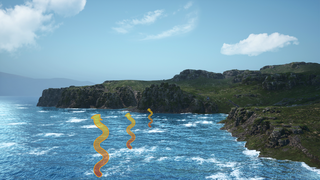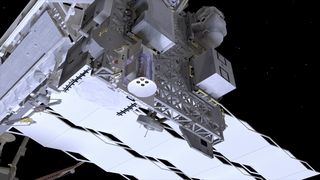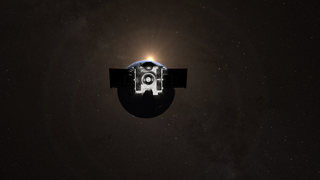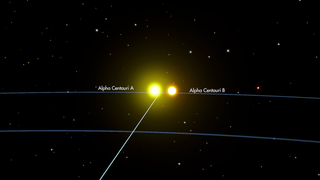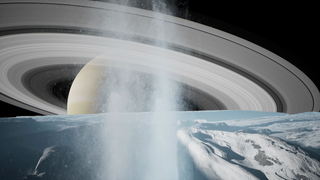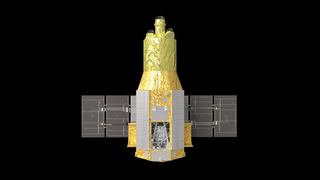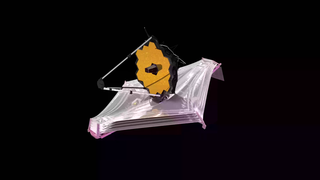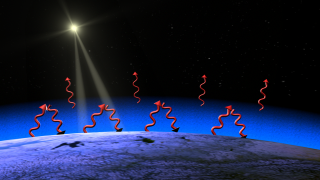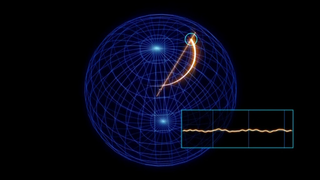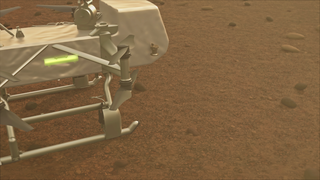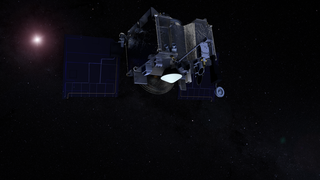Universe
ID: 20378
Astronomers think a long GRB (gamma-ray burst) arises from a massive, rapidly rotating star when its core runs out of fuel and collapses, forming a black hole in the star’s center. In this artist's concept, the camera flies into a vast cloud of dust and gas the star has been steadily ejecting over thousands of years. Near the star, a particle jet driven by matter falling toward the black hole erupts from the surface at nearly the speed of light. A more distant view reveals two jets moving in opposite directions, extending into and interacting with the cloud material, and producing the GRB and its afterglow. To detect a GRB, one of these jets must point toward Earth.
Long Gamma-Ray Burst
Used Elsewhere In
Animation Credits
Adriana Manrique Gutierrez (KBR Wyle Services, LLC): Lead Animator
Scott Wiessinger (KBR Wyle Services, LLC): Producer
Francis Reddy (University of Maryland College Park): Science Writer
Aaron E. Lepsch (ADNET Systems, Inc.): Technical Support
Eric Burns (Louisiana State University): Scientist
Scott Wiessinger (KBR Wyle Services, LLC): Producer
Francis Reddy (University of Maryland College Park): Science Writer
Aaron E. Lepsch (ADNET Systems, Inc.): Technical Support
Eric Burns (Louisiana State University): Scientist
Please give credit for this item to:
NASA's Goddard Space Flight Center Conceptual Image Lab
NASA's Goddard Space Flight Center Conceptual Image Lab
Short URL to share this page:
https://svs.gsfc.nasa.gov/20378
Missions:
Fermi Gamma-ray Space Telescope
Swift
This item is part of this series:
Astrophysics Animations
Keywords:
SVS >> Gamma Ray Burst
SVS >> Astrophysics
SVS >> Space
SVS >> Supernova
SVS >> Star
NASA Science >> Universe
https://svs.gsfc.nasa.gov/20378
Missions:
Fermi Gamma-ray Space Telescope
Swift
This item is part of this series:
Astrophysics Animations
Keywords:
SVS >> Gamma Ray Burst
SVS >> Astrophysics
SVS >> Space
SVS >> Supernova
SVS >> Star
NASA Science >> Universe

